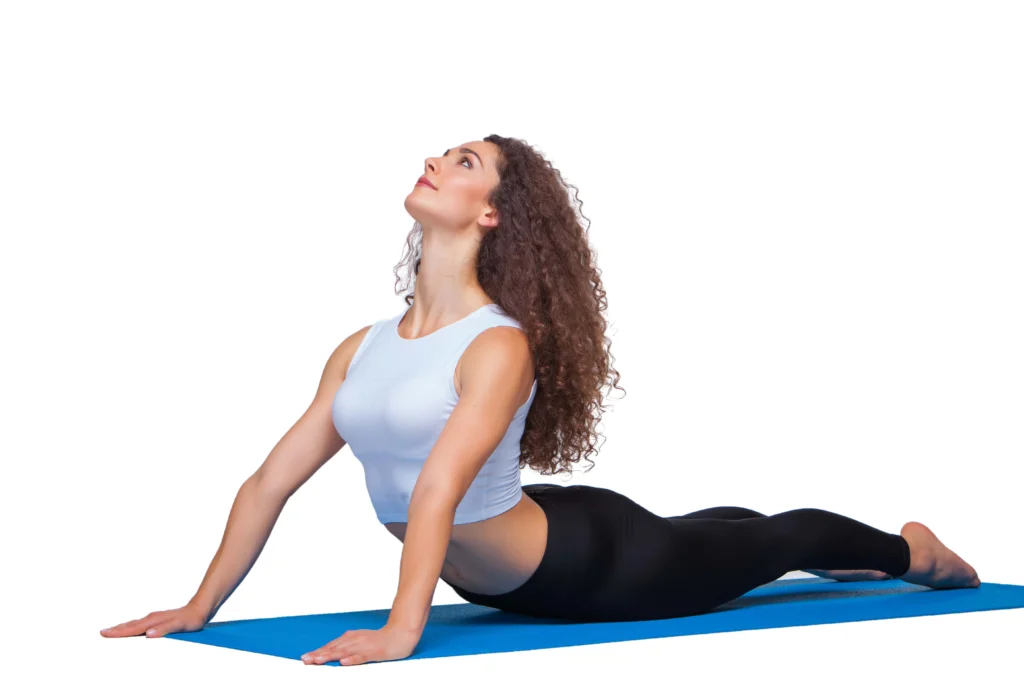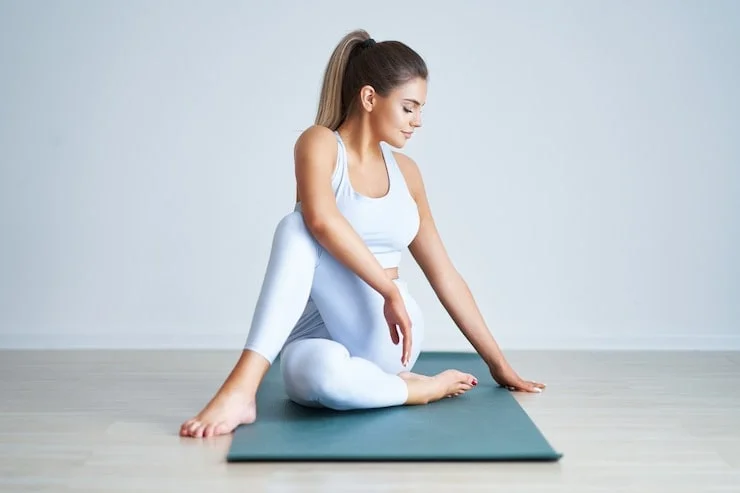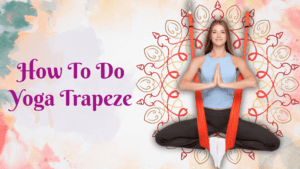Envision Ashtanga Yoga as a vibrant and efficient style of yoga that would ponder for your body and care. It’s like a special journey that transforms you, and what’s cool is that it’s adaptable. So, if you’re into doing yoga at home, Ashtanga is perfect for you.
Ashtanga Yoga
Ashtanga Yoga Basics Ashtanga Yoga, often called the “eight-limbed yoga,” is a classic way of doing yoga. It has a specific order of poses, and you match your breath with each movement. Starting this yoga adventure at home lets you create a personal and close-up experience, designed just for you.
In simple terms, Ashtanga Yoga is like a well-organized dance of poses and breathing that you can do at home for a customized and special experience.

Benefits of Practicing Ashtanga Yoga at Home
- Upgrades Adaptability and Strength
One of the essential benefits of rehearsing Ashtanga Yoga at home is the progressive improvement in adaptability and strength. The tedious idea of the postures advances muscle conditioning and joint adaptability.
- Promotes Mental Well-being
The meditative aspect of Ashtanga Yoga contributes to mental well-being. Home practice gives a peaceful climate, permitting specialists to dig further into care and mindfulness.
- Convenience and Time Efficiency
Home practice eliminates the need for commute and attaches to your schedule. With short, focused sessions, Ashtanga Yoga can fit seamlessly into a busy lifestyle.
Setting Up Your Home Yoga Space
- Choosing the Right Location
Select a quiet and clutter-free area for your practice. Regular light and great ventilation add to a positive air.
- Essential Yoga Props
Invest in basic props like a yoga mat, blocks, and a strap to ensure a comfortable and supported practice.
Understanding Ashtanga Yoga Basics
- Breath Synchronization (Ujjayi Breathing)
Mastering Ujjayi breathing is foundational. This real breath procedure improves concentration and fills in as a musical aide through the training.
- Sun Salutations (Surya Namaskar)
Begin with the Sun Salutations to warm up the body. This series is urgent for building the progression of the training.
- Primary Series Poses
Familiarize yourself with the primary series poses. Start with the basics and progressively incorporate more challenging postures.

Creating a Routine and Setting Goals
- Establishing a Consistent Practice Schedule
Consistency is key. Put forth reasonable objectives and designate explicit times for your training to fabricate a manageable daily practice.
- Setting Realistic Goals for Progress
Define achievable milestones. Whether it’s dominating a difficult posture or supporting a more drawn-out training, commend your advancement.
Guidance for Beginners
- Starting Slow and Gradual Progress
Beginners should ease into the practice. Focus on form and gradually increase the intensity as your body becomes accustomed.
- Seeking Online Tutorials and Classes
Online tutorials and classes provide valuable guidance for beginners. Follow trustworthy teachers and construct a strong groundwork.
Maintaining Focus and Mindfulness
- Incorporating Meditation into Your Practice
Integrate short meditation sessions to enhance focus. This mental aspect is as vital as the physical posture.
- Staying Present in Each Asana
Avoid distractions by staying present in each pose. Careful practice improves the psyche and body association.
Overcoming Challenges in Home Practice
- Dealing with Distractions
Create a dedicated space to minimize distractions. Communicate your practice time to family members to foster a supportive environment.
- Addressing Physical Discomfort
Listen to your body. Discomfort is normal, but pain is not. Change postures and look for direction if necessary.
Maintaining Consistency and Motivation
- Finding Joy in the Practice
Find joy in the practice itself. The physical and mental advantages are natural inspirations.
- Mixing Up Your Routine
Prevent monotony by exploring variations and incorporating new poses. Keep the training dynamic and locking in.
Exploring Advanced Ashtanga Poses
- Gradual Progression to Advanced Asanas
As you advance, explore more challenging poses. Progress should be gradual to avoid injuries.
Related: Master the Art of How to Do Ashtanga Vinyasa Yoga Like a Pro!
- Seeking Expert Guidance
Consider seeking guidance from experienced teachers for advanced poses. Their capacity ensures safe development.

Incorporating Ashtanga Philosophy into Daily Life
- Yamas and Niyamas
Embrace the ethical principles of Yamas and Niyamas beyond the mat. Apply them to ordinary associations for thorough success.
- Mindful Living Off the Mat
Extend mindfulness into everyday activities. Ashtanga’s reasoning rises above the mat, impacting a fair way of life.
Common Mistakes to Avoid
- Overexertion and Pushing Too Hard
Avoid pushing your limits excessively. Progress should be gradual to prevent injuries.
- Neglecting Rest and Recovery
Rest is vital for muscle recovery. Balance intense practices with restorative sessions for overall well-being.
Taking up Ashtanga Yoga at home can be a very fulfilling experience. A transforming journey to physical and mental well-being, this practice gives guidance on everything from setting up your room to mastering advanced poses. Accept the path, practice consistently, and reap the all-encompassing advantages of Ashtanga Yoga.
Related: The Amazing Benefits of Ardha Chakrasana and Master Its Transformative Steps
FAQs (Frequently Asked Questions)
Q1. Is it necessary to practice Ashtanga Yoga every day at home?
A1. Ashtanga Yoga can be practiced daily, but listen to your body. Consistency matters more than daily intensity.
Q2. Can I start Ashtanga Yoga at home as a complete beginner?
A2. Absolutely! Start slow, seek guidance, and gradually build your practice.
Q3. How long should my daily Ashtanga Yoga practice be at home?
A3. Aim for at least 30 minutes to an hour, adjusting based on your schedule and energy levels.
Q4. How would it be advisable for me to respond assuming I face difficulties in specific postures?
A4. Modify the pose, seek guidance online, or consult with a yoga instructor for adjustments.
Q5. How can I stay motivated to practice Ashtanga Yoga regularly at home?
A5. Track down bliss in the training, put forth practical objectives, and shift your daily schedule to keep it fascinating.




